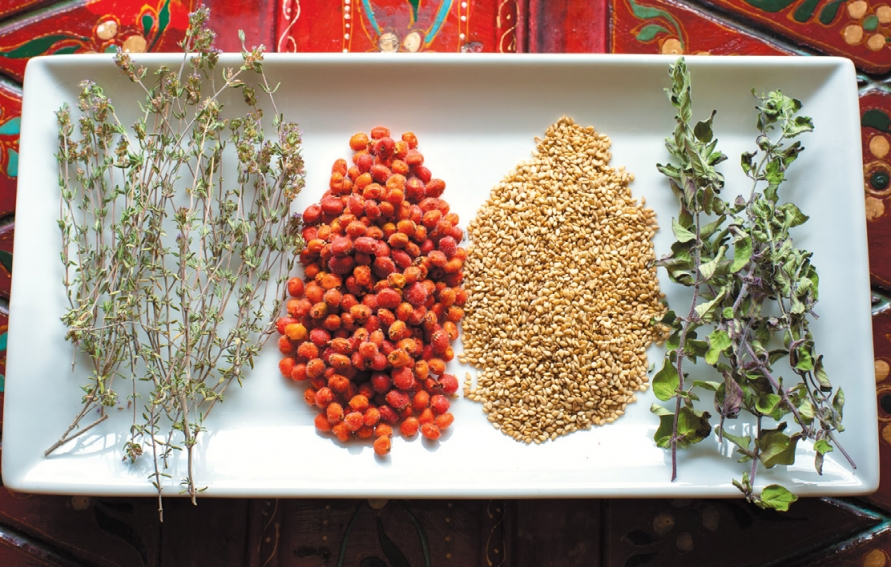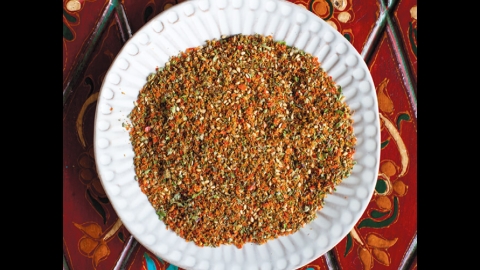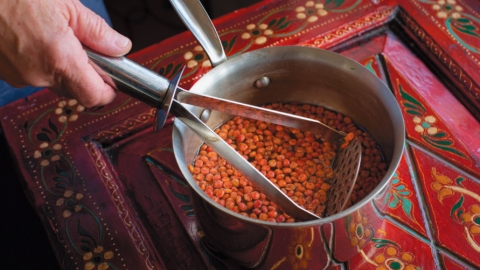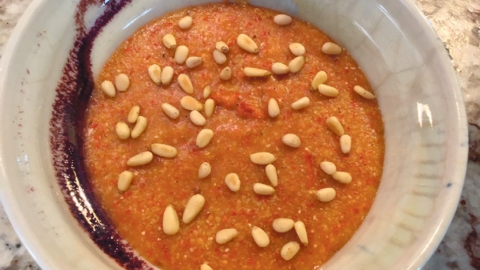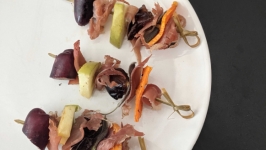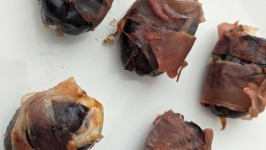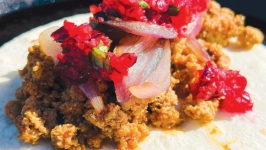Ingredients
- 4 tablespoons ground sumac
- 7 tablespoons dried thyme
- 2 tablespoons dried oregano
- 2–3 tablespoons toasted whole sesame seeds
- ½ teaspoon salt
- Optional ingredients: dried medium-hot chili flakes, sweet paprika, cumin, summer savory, marjoram.
Preparation
Grind all ingredients together. Add more sumac, salt or other ingredients to adjust to your taste. Sprinkle on pita chips toasted with olive oil or bread brushed with olive oil as a snack. Or add to vegetables such as roasted squash, chicken or baked fish.
About this recipe
Note: If this all seems too labor intensive, sumac is readily available at Middle Eastern markets such as Haji-Baba in Tempe, at Penzey’s and online from various sources. Because the sumac one buys commercially appears to be a darker, more brownish red, I suspect it comes from a variety other than three-leaf sumac—perhaps staghorn (an eastern United States variety) or smooth sumac, whose cone-shaped drupes are very easy to harvest. The taste is similar. Purchase high-quality dried thyme, oregano and sesame seeds, and you can make up a fresh batch to have on hand and share with friends.

